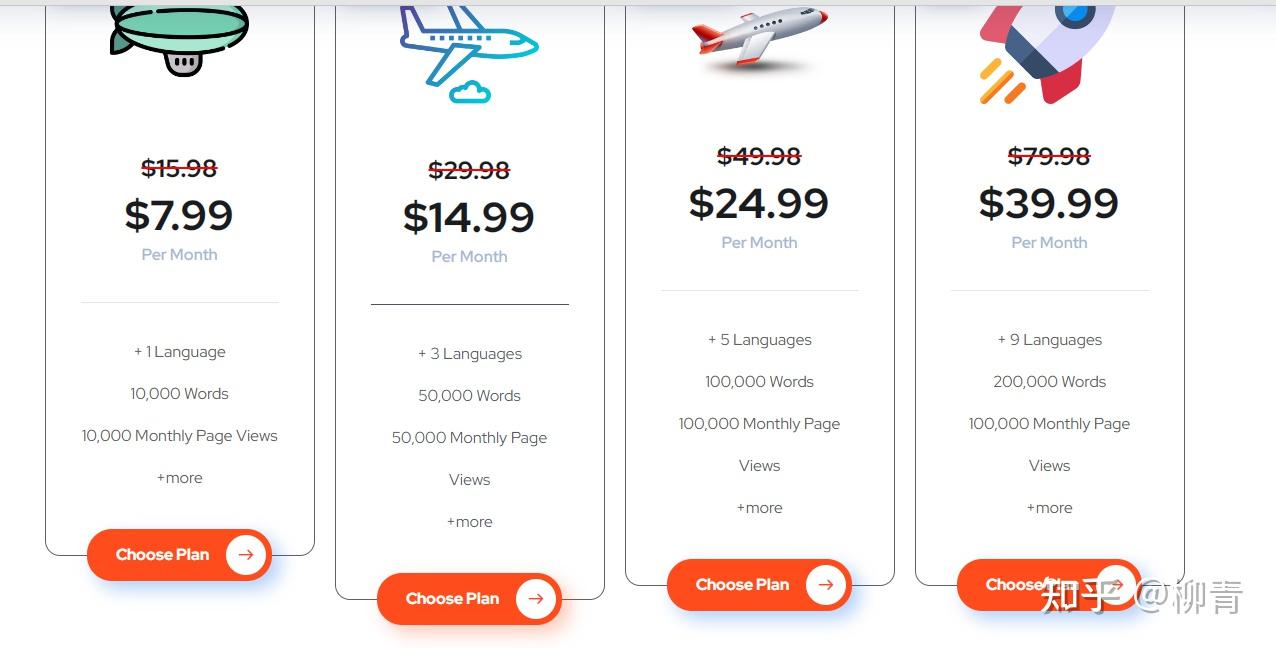We all know that international SEO can help a multilingual website to be seen in different countries in the corresponding language.
Multilingual applications The support that multilingual SEO can give is to improve global rankings in other countries.
Once upon a time, building a multilingual e-commerce website was a laborious task.
Determine the structure, build more stores, make language packs, find translators, find a development team, and check and accept. A set of procedures can often be exhausting. But as a result, the shops that were created were not operated and maintained by anyone, and then they were left to be blown away by the wind and rain.
With the rapid development of AI technology, and product managers' demand for small and medium-sized websites is gradually deepening. Various one-click cloud multilingual applications have gradually become the new favorite of small website owners.
How does this cloud-based multilingual translation application differ from traditional multilingual site solutions? Knowing this, it is better to be targeted when making choices.
Traditional multilingual e-commerce site introduction
completely separate subsite
Just do a few sites well, it doesn't matter who it is. When users switch languages, they jump to a new site.
Advantages: It is very beneficial to seo, and the visitor experience is good. The cleanest solution, no worries, each sub-site can operate independently and have nothing to do with each other.
Disadvantages: Since it is completely independent, it is no different from building a large number of sites, and the maintenance workload is heavy. The backend is also independent, and it is troublesome for customers to operate in a full cycle (the same customer accesses across sites, and it is likely that each site must register once).
It is suitable for enterprises with a large number of people, a large business volume, and extremely localized operations. (this kind of solution is rarely used now)
Semi-independent, semi-fully independent multilingual sites
The same system, or shared code, or shared database. Multilingualism is achieved through architectural design. So-called multilingual packages, or multilingual plug-ins deployed on self-owned services, etc., all belong to this category.
Advantages: It is very beneficial to seo, and the visitor experience is good. The backend is connected and can meet the needs of independent operations. Moderate workload (automatically translated for the most part).
Disadvantages: It is deeply integrated with the website, and the database is deployed on its own server. It is extremely difficult to upgrade and maintain, and the cost is high.
It is suitable for enterprises with technical teams, which is still very popular in medium-sized sites.
non-standalone multilingual site
This is not a multilingual site, it can only be regarded as a super simple solution, which is to directly use a translation plug-in to temporarily translate the webpage selected by the user. It is not essentially different from the translation plug-ins installed on the browser by the user himself.
Advantages: maintenance-free, almost free of money.
Disadvantages: It doesn't help SEO. In the eyes of search engines, your site is still a monolingual site. Pictures, etc., cannot be translated. There is no control over the results of automatic translation. The visitor experience is relatively poor.
Knowing this, it's much easier to introduce multilingual applications in the cloud.
Cloud Multilingual Solution
This solution is not new, it was developed on the basis of multilingual plugins for semi-independent sites. As mentioned above, those plug-ins or programs are deeply embedded into the system.
However, this kind of embedding poses a problem, they must have an impact on the main body of the website. Not only does it have an impact on some website building systems, but the impact is irreversible. Once deployed, it is difficult to uninstall, or it is difficult to uninstall cleanly. (What does rogue software feel like, what does this deployment method feel like)
People naturally hope that the impact is as small as possible, so the multilingual solution on the cloud was born.
Using the cloud multilingual solution, all translation materials and language configurations are deployed on the third-party cloud.
The website can even be as simple as adding a piece of js code to achieve multilingual deployment. Just like adding ga analysis code, livechat online customer service software.
Cleaning up multilingual sites is as easy as pie, just delete the js.
The advantages refer to the above, plus easy deployment, easy uninstallation, and simpler operation, these are the advantages of cloud multilingual sites.
Are there any downsides to this deployment approach?
Of course, their biggest disadvantage is that they are a bit expensive, and they are not as cheap as one-time deployment. Many of these software are paid-as-you-go.
For a website of a certain size, seven or eight hundred dollars a year is very common.

The most deceitful thing is not the cost, but the most deceitful thing is that once the renewal is stopped, all the previous work will be gone. The advantage is that the separation is clean, and the disadvantage is also it. It is too clean and leaves nothing for you.
Other disadvantages: 1. For devices that do not support js, there is a high probability that multi-language will be invalid. 2. Individual webpages and individual forms cannot be translated. Encrypted, or content that changes according to user behavior (dictionary, chart), these dynamic content sometimes cannot be translated. (The plug-ins deployed on the server side also have this problem. Only those problems that are deeply integrated with the website can be solved). Therefore, it is not suitable for websites with complex interactions and developed using independent technologies.
Which e-commerce website is the cloud-based multilingual translation program best for?
A start-up website with a demand for quick test products has a few new products, and set up an independent station for trial sales. Fast drainage, fast iteration.
Websites built using mainstream website builders.
The main purpose is to attract traffic rather than serve the website throughout the cycle.
What are the multilingual plug-ins that can be used quickly
Imagine that you are a modern person, suddenly transported to a world full of swords and magic. Here, you will encounter many novel things and challenges. In order to better adapt to this world, you need to learn to understand the language of each race.
Don't worry, we have Weglot and Conveythis two magic weapons to help you! They are the most famous multilingual solutions in the world, allowing you to navigate the world with ease.
The following is an excerpt from some other people's introduction to these two plug-ins. I am applying for a trial, and I will post my practical experience later.

Weglot is a multilingual solution that converts your Shopify, Bigcommerce online store into a multilingual website with multiple languages. It's easy to use because Weglot handles the content automatically. Weglot is one of the best options for adding a language switcher to your newly created multilingual online store with absolutely no extra hassle required other than integrating a Weglot API key.
Weglot has the ability to connect to a large number of platforms, it can be used to have a multilingual wordpress website. Also, Weglot plugin can be used on other eCommerce platforms like Bigcommerce, Shopify, Joomla, etc. to additionally create multilingual eCommerce websites.
Selecting the languages you need to add is a matter of then Weglot does the automatic machine translation for your customers. The content will be displayed in the native language of the visitor. Weglot Bigcommerce can be managed from the dashboard so you can configure it appropriately. And, from there, you can edit the appearance of the language switcher, manually make language corrections needed for human translation, and it also helps with multilingual SEO. If you need to rank higher in global searches, multilingual SEO is critical and Weglot has you covered.
Is a weglot expensive? It doesn't matter. Also cheaper conveythis

Conveythis is an automatic machine translation extension that makes it easy to have content in multiple languages. Launched in 2018, the extension supports multiple languages including Spanish, English, French, Russian, Arabic, and German, and can help online stores achieve multilingual support.
Conveythis is a notable Weglot alternative because of its lower price, which makes it a great option for translating Shopify, Bigcommerce stores.
While Conveythis is still constantly developing and improving their platform, it's fast enough that it's a distinct advantage in having a Bigcommerce multilingual website with multiple languages. Conveythis is a great translation software for multilingual Shopify, Bigcommerce sites, easy to install and adds a language switcher for customers so they can change the language they want or redirect to other pages based on their IP.
postscript
Creating a Bigcommerce multilingual store is as easy as using the aforementioned translation app. Both Weglot and Conveythis are great Bigcommerce extensions for easy multilingual support.
Compared to WordPress or Shopify, there are not many good solutions on Bigcommerce, but the above-mentioned application is already one of the best solutions. Weglot and Conveythis improve automatic translation with artificial intelligence and can compete with some other famous plugins outside of WordPress, such as Translatepress or WPML.
- Traditional multilingual e-commerce site introduction
- completely separate subsite
- Semi-independent, semi-fully independent multilingual sites
- non-standalone multilingual site
- Cloud Multilingual Solution
- Are there any downsides to this deployment approach?
- Which e-commerce website is the cloud-based multilingual translation program best for?
- What are the multilingual plug-ins that can be used quickly






